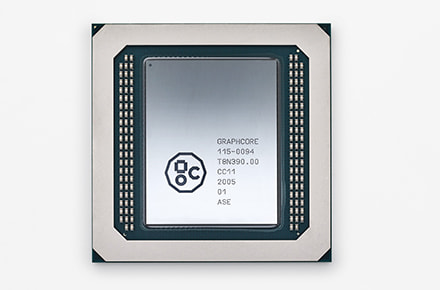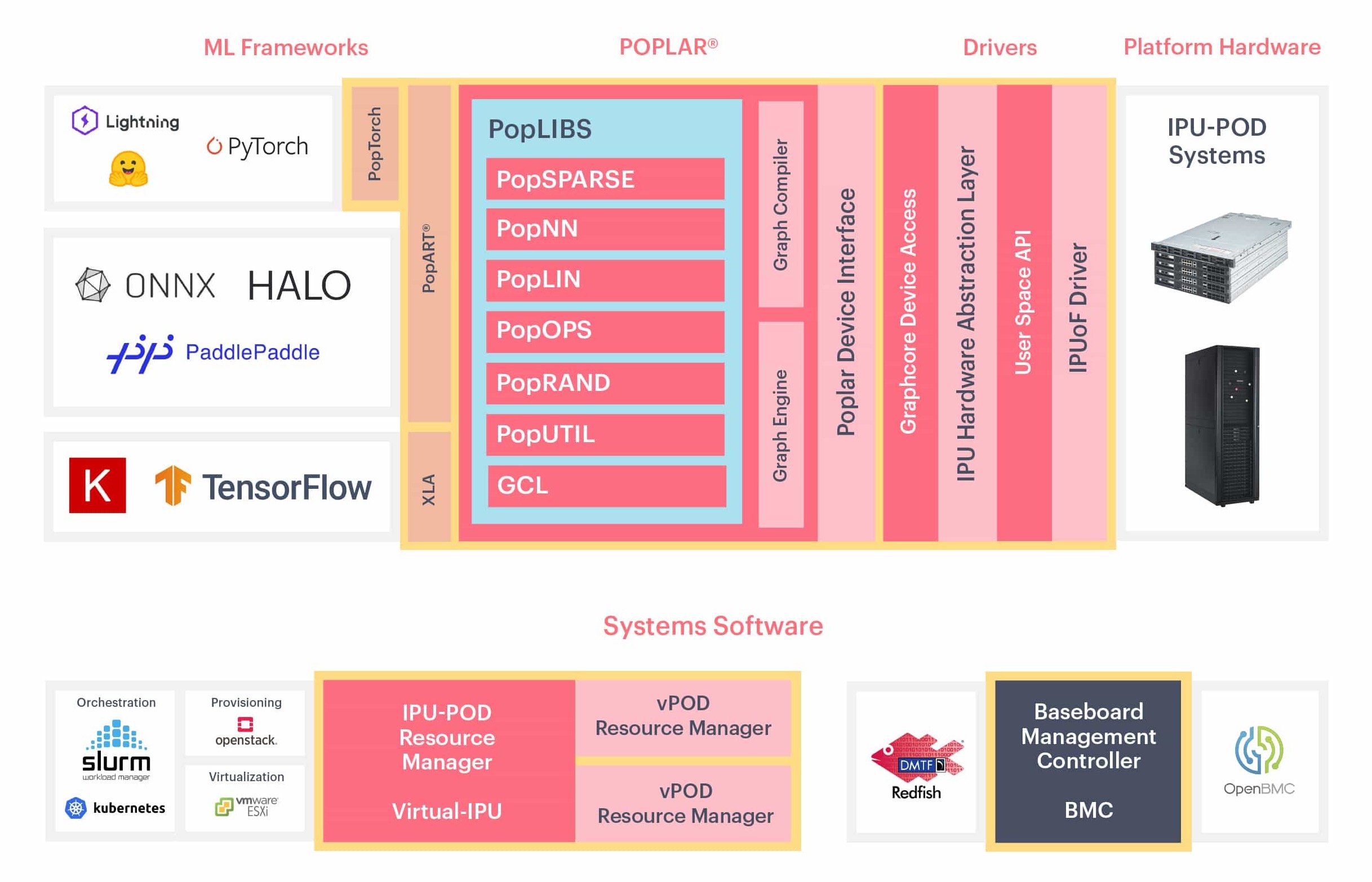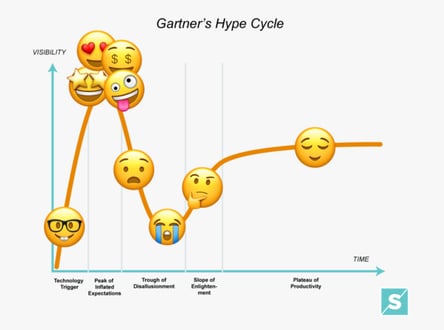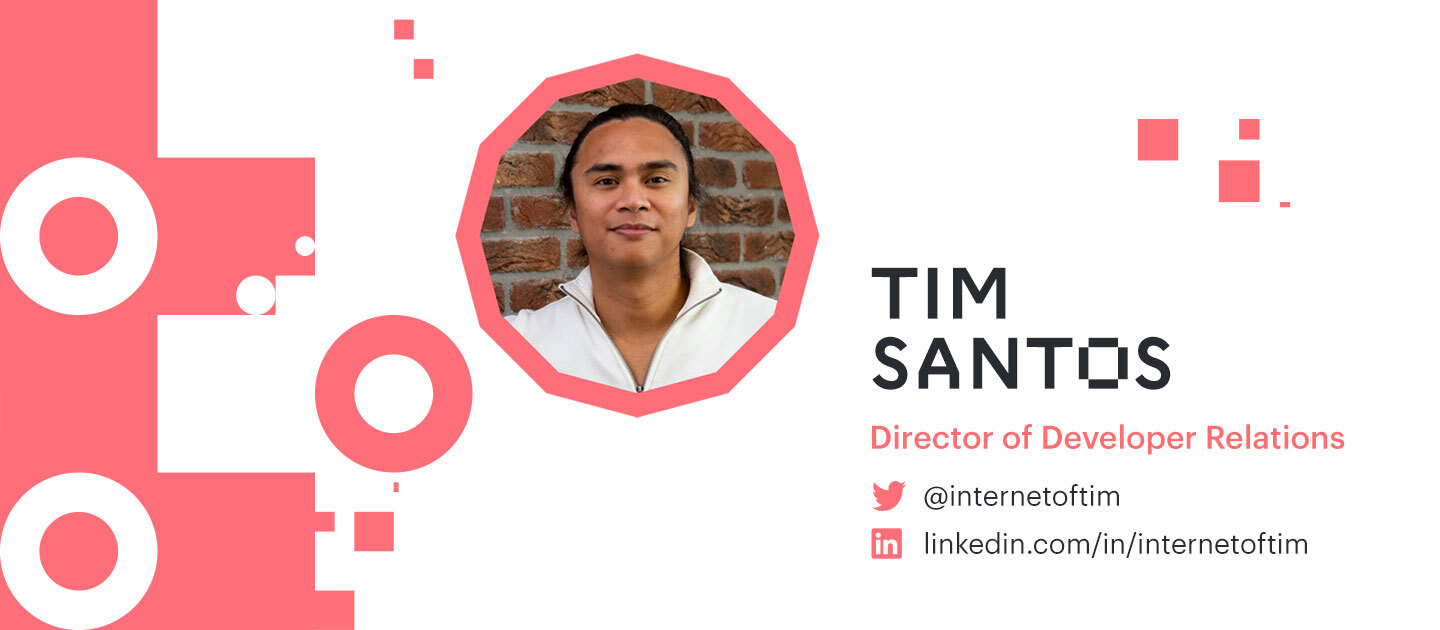Hello World! I’m excited to announce that I’ve joined Graphcore as Director of Developer Relations. Why? Because I believe our IPU hardware is amazing. I want to help AI developers get stuff done and make cool AI applications with our cutting-edge technology. In other words, I’m here to help you succeed.
.png?width=300&name=meme%20(1).png)
It’s not all about SOTA. Developer success can also mean getting your model to converge, getting your paper accepted for a conference or finding that missing ; in your code.
What is the IPU?
Graphcore created the Intelligence Processing Unit, or IPU, the world’s first ever processor designed specifically for machine intelligence. AI is a totally different kind of compute, where we’re dealing with unusual characteristics like probabilistic data or sparsity.
While traditional processors like GPUs are being adapted to work with machine learning algorithms, the IPU has been built from the ground up to run them as efficiently as possible. So naturally, they’re a lot faster.

Right from the start we’ve been thinking about how developers can use IPUs to their advantage. We co-designed our Poplar software stack with the IPU to make it easy for developers to run their applications via popular ML frameworks like TensorFlow and PyTorch or directly program our systems in Python and C++ for extra compute firepower.

But don’t take it from me. In fact, hundreds of developers are already using Graphcore IPUs to accelerate their AI projects across fields like finance, healthcare, academia and scientific research and you can read their stories on our website.
What am I doing here?
The IPU is amazing. It’s one of the most computationally advanced pieces of hardware I’ve ever used and, along with the Poplar SDK, it makes building state-of-the-art models so much faster. Its unique architecture is opening up opportunities for breakthroughs in new areas of studies and fields of play. My main objective is to make sure AI Developers get maximum performance out of IPUs and can bend them to their creative will.
I’ll break them down into these 3 core initiatives of the DevRel team which we prioritise to ensure a great developer experience:
Educating Developers: What do we know?
Developers need to know what IPUs are, how to use them – the art of what’s possible. I’m talking about our content! We’ve got plenty of brilliant researchers and engineers that have worked on the IPU and innovative partners that have successfully pushed the boundaries of their field with IPUs. We need to get content out there for other developers to read, watch, and recreate so they can successfully make new and better applications that can be fed back into this flywheel of awesomeness and innovation.
Enabling Developers: What can we do?
Yes, docs, talks, and walks (walkthroughs) are helpful, but devs need tools. Teach a person to fish, right, but we must provide them with the right tools for fishing! In the IPU world, these tools would be our SDK, developer tools, tutorials, templates, and example code. I will be working with the engineering teams to advocate for developer feedback and will also contribute code and tools myself.
Engaging Developers: How can we interact?
It takes a village, it’s the first half of an African proverb about raising a child, but it’s also a universal truth for every developer that has ever written or debugged code. There is valuable collective wisdom within our village of silicon engineers, architects, core IPU engineers, model developers, data centre managers, and more. I’d like to strengthen channels where developers can have fruitful interactions with each other as they program IPUs.
About me
I’ve worn various developer hats in my career across data science and AI, honing my skills in firms like Samsung, Teradata and EY. Along the way, I’ve experienced working in the different stages of the development lifecycle, from being a research engineer and a client-facing data scientist to leading MLOps teams.
I’ve always enjoyed learning new things in a variety of domains. For example, I worked on computational linguistics for my electronics engineering capstone and did audio-visual speech recognition for my masters research. I’ve enjoyed experimentation and writing papers and patents, the same way I’ve enjoyed productionising code that’s found its way into millions of devices.
The past decade has shown an increased pace of change and a variety of innovative cycles that we have seen in technology.

A scientific journey from AI hype to adoption and maturity. (Source:
https://bit.ly/3xjWxl0)
My penchant for following the next shiny thing taught me a lot and has led me to ride various hype cycles and work on interesting (and useful) stuff:
- Digital Signal Processing, that’s where it all started. I was a researcher in the University of the Philippines DSP Lab at the time when we started digitising everything. It all starts with the data. I designed and collected a bunch of multilingual speech and text corpora for Philippine languages. There’s a lot of them (180+ languages) and datasets were scarce. Even later on in my career when working with AI, I found the experience quite useful and a good foundation especially now that there’s an emphasis on Data-centric AI.
- Created video streaming and network acceleration algorithms that have found their way in screens both large and small. It was also the first patent I had granted with Samsung, it was an equally challenging and fulfilling development crunch.
- Developed a mixed-reality tool for connected classrooms. It was a project with Samsung’s Advanced Solutions Lab where one day I’m prototyping hardware for its Tangible User Interface, and another day I’m coding pattern recognition.
- While Harvard Business Review’s D.J. Patil and Thomas Davenport declared Data Scientist “The Sexiest Job of the 21st Century”, I have been fortunate enough to personally have been in a position to lead companies in various industries which were going through their own big data and data science transformations. During this time, I started working more closely with clients and on applications of big data analytics and machine learning. I’ve grown in breadth as I dealt with telco, automotive, finance, and pharmaceutical industries. This was in that time before GDPR, so companies were very excited and there was a free-for-all of ideas on how to make use of your data.
- Just before joining Graphcore, I was leading MLOps teams taking AI applications from experimentation to deployment. The dust from the hype started to settle and the industry wasn’t content with experiments anymore, so I started working on products and industrialising AI. This was also the time I began focusing on building and enabling developer teams and communities of practice.
Now, I’m excited to be working with a technology that has the potential to make AI breakthroughs happen across so many different fields.
What now?
I’m glad to have joined Graphcore as DevRel at a time where we’re more focused than ever on developer success. We want to help you accelerate your models with ease and make it simple to innovate with AI.
To make that happen, here’s what I’ll be up to in my new role:
- Showcasing more of what our amazing IPU developer community has achieved by writing blogs and presenting at webinars, conferences and meet-ups
- Creating code and content that you can build upon and leverage to take your AI projects to the next level
- Developing and curating super useful and practical content in various forms across different channels to help you get the most out of your applications
- Setting up community infrastructure so that you can interact, collaborate and get support from other developers as you’re coding with IPUs
- Gathering feedback from you to make sure our technology keeps getting better and better
- Giving you opportunities to try out IPUs at events, hackathons and competitions
- Making our Developer Portal the ultimate hub for IPU programming so you will always have everything you need to get coding
- Connecting with developers over social media: you can catch me on Twitter at @internetoftim
Since starting at Graphcore, I’ve been thrilled to work alongside wonderful and smart people building state-of-the-art technology – that’s the technologist’s dream, right? The greatest technology isn’t necessarily the biggest or the shiniest – it’s the technology that can empower you to achieve your goals, completely unlimited. And we’ll be building programmes that will focus on just that – Developer Success.
Our Developer portal is a treasure trove for learning how to program IPUs: there, you’ll find all our documentation, tutorials, how-to videos, links to our GitHub code and much more.
Keen to get your hands on IPUs? Get in touch with our sales team here or check out IPU products to learn more about our hardware.
